8 have author last names that start with J have author last names that start with J
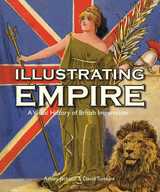
Through more than 150 striking and original images from the John Johnson Collection of Printed Ephemera at the Bodleian Library, Illustrating Empire tells the history of the British Empire from the age of discovery through World War II. This wealth of visual material was used to promote, record, and celebrate the development of the Empire, which by 1922 included more than thirteen million square miles—or almost a quarter of the Earth. The captions that accompany the illustrations reveal the narrative of the Empire and unlock the history and meaning behind the images.
Following a general introduction that provides an overarching discussion of the many facets of the Empire’s long history, the book is structured around eight major themes: emigration and settlement; imperial authority; exploration and knowledge; trade and commerce; travel and communications; popular culture; exhibitions and jubilees; and politics. Along the way, Illustrating Empire examines the significance of media in conveying and creating ideas about empire and the non-European world. It also provides a clear summary of debates regarding the significance of empire in British culture.
This informative and accessible visual history represents a significant contribution to the literature on culture and empire and will be an engaging and useful source of historical information for general readers and scholars alike.
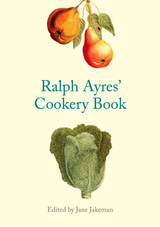
If you've ever wondered what a London Wigg was or why plum cake does not actually contain plums, Ralph Ayres' Cookery Book will prove to be a most rewarding collection. Here the details of sumptuous British meals are meticulously presented, as is their larger context in the history of cooking. Recipes for such famous dishes as Quaking Pudding, Oxford Sausages, Damson Preserve, and other savory English delights fill the pages. Some, such as the famous New College Pudding, are still used today. The volume is beautifully produced, featuring a wealth of full-color botanical illustrations and elegant script reproduced from the original text, and also includes an informative foreword by Bodleian emeritus librarian David Vaisey.
A captivating glimpse into the world of eighteenth-century food and the culture of academia's apex, Ralph Ayres' Cookery Book is a valuable and engaging historical chronicle of British cuisine. It will appeal to social and culinary historians, as well as to the many lovers of griskin and collops.

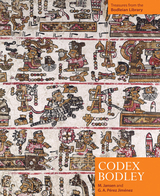
Codex Bodley explores the enormous wealth of information contained in the manuscript, which documents precolonial Mixtec genealogical relationships and historical events spanning from 900 AD to 1521. Maarten Jansen and Gabina Aurora Pérez Jiménez provide insightful and expert commentary on the manuscript, explaining its history as they consider key characteristics of Mixtec pictography. They then provide an engaging and masterful interpretation of the manuscript's narrative, with a detailed explanatory reading of its pictograms and their significance. Accompanied by vivid and colorful illustrations, Codex Bodley is an invaluable text for scholars of precolonial Mexican history, art, and culture.
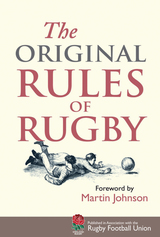
Rugby has rules, seriously? Believe it or not, it does. The Original Rules of Rugby brings together the original rules of the game drawn up at Rugby School in 1845 and the first rules of the Rugby Football Union in 1871. The book shows the complex evolution of rugby football and the intriguing history behind its shifting rules.
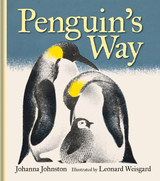
In Penguin’s Way, a playful colony of emperor penguins lives on the edge of a faraway secret sea. During the summers, the penguins are content to fish and swim in the icy waters. But, when the seasons change, they must travel more than one hundred miles to the snowy lands surrounding the South Pole. All across the snow plain, the penguins sing songs to welcome newly hatched chicks into the world, but how will the fluffy newborns survive the freezing winter?
Few things pique children’s curiosity about the world around them better than a good book. Brought back for a new generation of young readers, Penguin’s Way offers a fun and creative introduction to these fascinating animals.

Whale’s Way introduces young readers to the humpback whale, one of the world’s largest creatures. With winter almost here, the gentle giants must swim, spouting and leaping, to the warmer waters near the equator. But, during the dangerous journey, the whales meet a band of hunters who wish them harm, and they must escape and guide the baby whales to safety.
Few things pique children’s curiosity about the world around them better than a good book. Brought back for a new generation of young readers, Whale’s Way offers a fun and creative introduction to these fascinating animals.
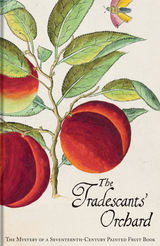
The Tradescants’ Orchard reproduces for the first time the entire manuscript, traditionally associated with the renowned father-and-son nurserymen the John Tradescants. The paintings pose many questions: Who painted them and why? What is the significance of the wildlife—birds, butterflies, frogs, and snails—that appear throughout? Why is there only one depiction of an apple tree despite its popularity? Were there others that have since gone missing?
A visual feast that will appeal to botany and gardening enthusiasts, the book also includes an introduction that maps out the mystery of how and why these enigmatic watercolors were made.
READERS
Browse our collection.
PUBLISHERS
See BiblioVault's publisher services.
STUDENT SERVICES
Files for college accessibility offices.
UChicago Accessibility Resources
home | accessibility | search | about | contact us
BiblioVault ® 2001 - 2024
The University of Chicago Press









